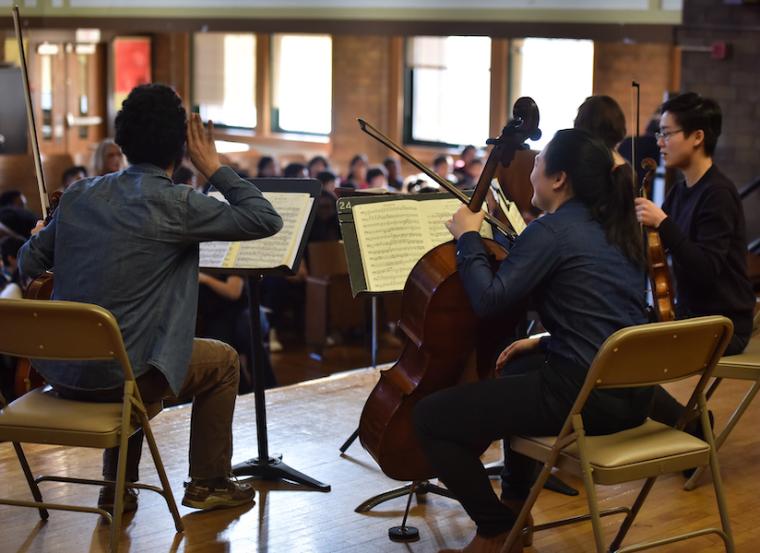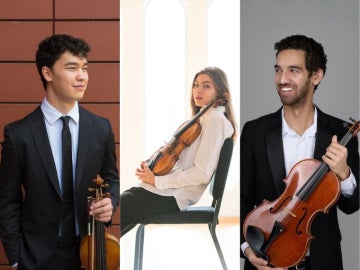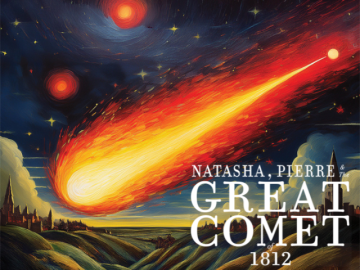Oberlin Launches Concentration in Music Pedagogy, Advocacy, and Community Engagement
Program leverages campus, community, and industry resources to foster development of students into artist-citizens.
April 27, 2021
Cathy Partlow Strauss ’84

Oberlin students perform for elementary schoolchildren during a conservatory tour in Chicago.
Photo credit: Yevhen Gulenko
In the two years since Oberlin began a strategic course of action to capitalize on the collective power of the Conservatory of Music and the College of Arts and Sciences, faculty have collaborated on the design of several distinctive programs intended to provide new opportunities for students to specialize and build professional skills.
The latest thematic concentration to be added to the growing number of interdisciplinary courses of study is the integrative concentration in Pedagogy, Advocacy, and Community Engagement (PACE) in the Conservatory’s PACE division.
Established in 2017, PACE builds upon Oberlin’s 100-year legacy of excellence in music education. The educational emphasis of the division is defined by a 21st-century need to train performing musicians, composers, and multidisciplinary artists to better serve their communities.
Coursework and opportunities within this division support students as they imagine, research, create, and practice connecting their enthusiasm for music, interdisciplinary arts, and academic interests to surrounding communities. Through hands-on experiences, they develop critical skills that allow them to more effectively engage diverse music learners and audiences.
Student interest in community music engagement is hardly a new phenomenon at Oberlin. The Conservatory Council of Students presents annual children’s and family concerts. Students secure internships with local youth arts organizations, create and perform programs for hospitals, and participate in after-school community engagement projects.
The versatility required of professional musicians in the 21st century encompasses an expansive set of skills. For Oberlin Conservatory students primarily immersed in preprofessional performance and composition tracks, the art of teaching and community arts programming are equally important to their future success. The entrepreneurial, organizational, and financial grounding necessary for creative independence and professional music-making is also essential coursework in the PACE division.
This new integrative concentration, open to all Conservatory and College of Arts and Sciences students, will more substantively guide and prepare students who prioritize music teaching, learning, and community music engagement for roles in which they will ultimately serve beyond Oberlin—not just as artists and teachers in their communities, but in areas of arts access, public policy, and social justice. They will envision innovative and sustainable ways to connect with local and global communities through music and gain experience in effectively making an impact—and making this work part of a meaningful career.
Music education professor and PACE division director Jody Kerchner emphasizes, “At the heart of this concentration is the opportunity for students to develop as artist-citizens, those who embrace their responsibility to build mutually beneficial partnerships with local and global communities through music.”
A minimum of 20 course credits and two experiential projects are required to complete the PACE concentration. The concentration’s design incorporates foundational and elective courses housed in both the Conservatory and College of Arts and Sciences that include music pedagogy, principles of education, psychology of musical behaviors, arts management, oral history, advocacy, and community building.
The two experiential projects can occur as independent projects throughout the academic year, Winter Term, or as summer internships, with one project being locally based—with institutions such as the Oberlin Center for the Arts, Northern Ohio Youth Orchestra, Grafton Correctional Institution, Mercy Health—and the other project undertaken elsewhere. Through this work, students will experience music-making and music engagement that already exists in community organizations and educational settings locally and globally. They will also expand their network with community musicians, music teachers, and music advocates.
Students will also maintain a digital portfolio that demonstrates their musical, pedagogical, and academic work and growth.
For students who embrace their responsibility to connect with communities through music, this pathway offers a formalized structure as well as credit for work they are already doing.
The integrative concentration in PACE joins an existing concentration in Arts Administration and Leadership. Oberlin College and Conservatory students may also pursue interdisciplinary minors in Music and Cognition, Music and Popular Culture, Arts and Creative Technologies, and Interdisciplinary Performance, and all Oberlin College students may pursue minors in music that capitalize on the Conservatory’s faculty and resources. Learn more about Oberlin’s musical pathways at Oberlin.edu.
You may also like…
Amy Lee Joins Oberlin Conservatory Faculty as Associate Professor of Violin
The renowned violinist and associate concertmaster of the Cleveland Orchestra brings extensive teaching and performing experience to Oberlin
Oberlin Students Selected for Prestigious New York String Orchestra Seminar
Directed by Oberlin artist in residence Jaime Laredo, intensive 10-day experience culminates in performances at famed Carnegie Hall.
"The Great Comet" Starts Something New
Oberlin Music Theater's inaugural production is a story of beginnings, which is a fitting theme for the first main stage performance of the Conservatory's newest program.

